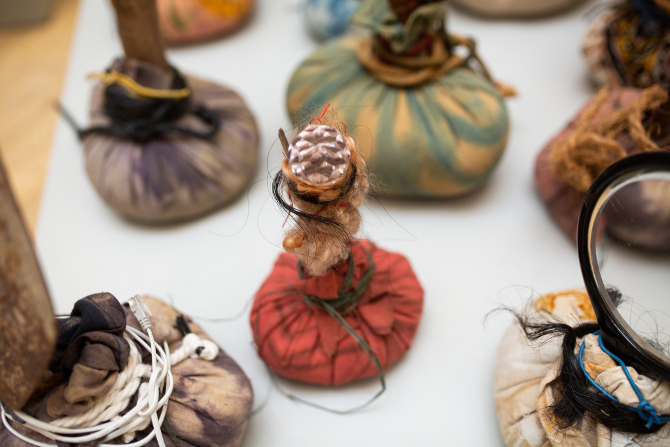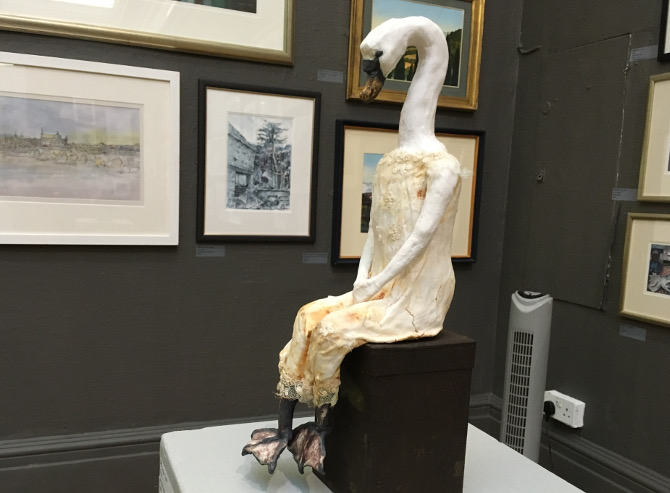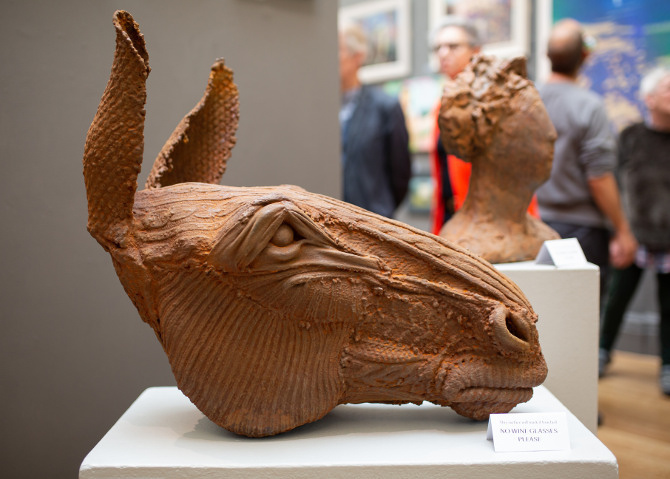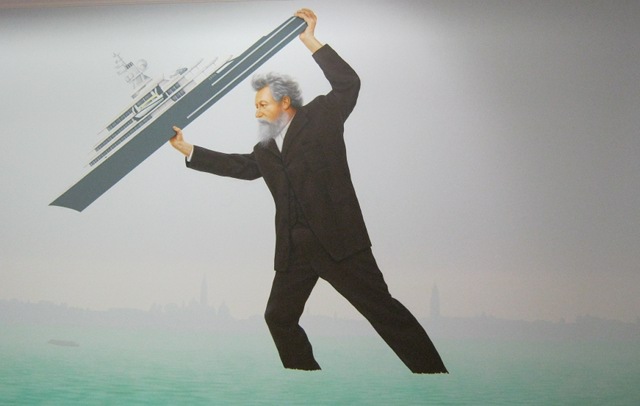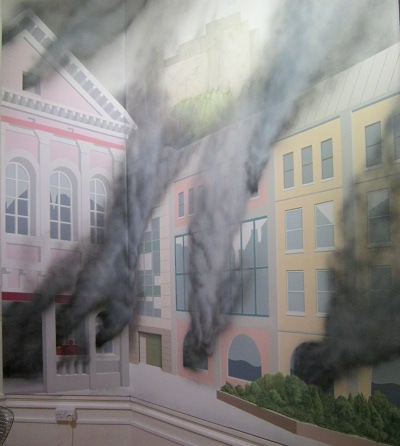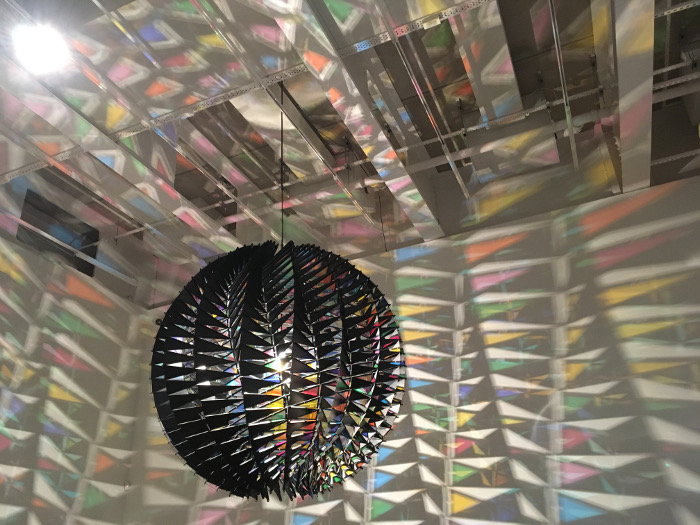 I became aware of Olafur Eliasson thanks to ‘The Weather Project‘ at Tate Modern in 2003. It was one of my first encounters with the way art can influence viewers’ behaviour, so that they become active participants. As people sat, sprawled and sunbathed in the cold hall of the Turbine Hall, it was clear that through toying with our perception, Eliasson and his team prompted us to grow more playful.
I became aware of Olafur Eliasson thanks to ‘The Weather Project‘ at Tate Modern in 2003. It was one of my first encounters with the way art can influence viewers’ behaviour, so that they become active participants. As people sat, sprawled and sunbathed in the cold hall of the Turbine Hall, it was clear that through toying with our perception, Eliasson and his team prompted us to grow more playful.
The same can be said of every installation in his In Real Life retrospective, which spans more than twenty years of imaginative experimentation and creative absorption.
Like a magician revealing his tricks, Eliasson is keen to offer insights both into his idea-generation stage and how these initial thoughts become physical entities. The exhibition begins with a cabinet of curiosities crammed with models, and ends with a replica of his studio wall crammed with press cuttings, fragments from fiction and other intriguing elements. It neatly bookends the works of art, presenting us with an insight into the artist’s preoccupations. I love the way this induces a sense of being part of something, rather than simply looking on. Eliasson’s works are intrinsically collaborative, not only with the input from his team, but in the dialogues and even problem-solving discussions they seed and enable.
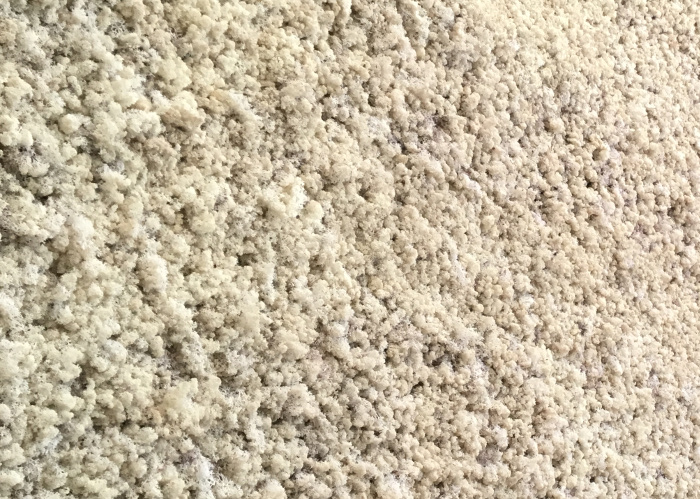
Moss wall by Olafur Eliasson
Not all the works are as interactive here as they’ve been elsewhere. Here, ‘Moss wall’, originally created in 1994, is a sight to marvel at rather than dig your fists into, while in ‘Beauty’, the rainbow is out of reach behind a barrier, like an exotic creature in a zoo.
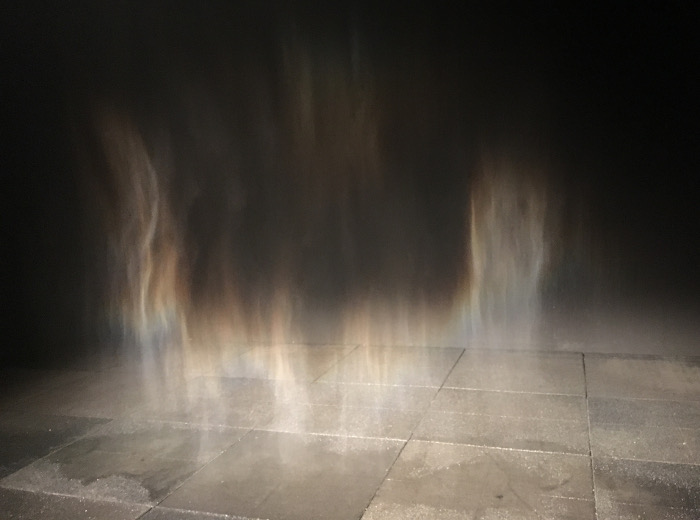
Beauty by Olafur Eliasson
Other experiences are fully there for the grabbing. For me the ‘Your blind passenger’ was eerily enchanting. The space brims with colour-shifting fog so dense I had to trust the ground to remain safe and reassure myself that no dangers lurked in the inches beyond the scope of my vision. The sensation was akin to how I imagine it feeling to be lost at sea.
Interactive highlights include the kaleidoscopic walk-through ‘Your spiral view’ and the extraordinarily vivid ‘Your uncertain shadow (colour)’, in which prisms cast spectators’ shadows in a glorious array of colours – perhaps the perfect modern-day family portrait.
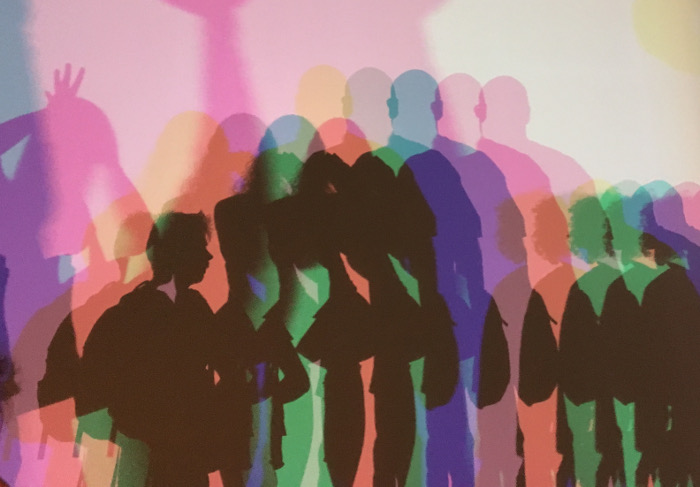
Your uncertain shadow (colour) by Olafur Eliasson
Eliasson’s interests lie in changing as well as reflecting the world. ‘The glacier series’ is step one of a photography project, with the second currently in progress, tracking melt patterns and climate change over the past twenty years. His work raises awareness of our impact on our home planet, as well as inventing practical solutions in some cases, such as with his ‘little suns’ – solar lights created to illuminate off-grid African villages at night.
Eliasson has been described as a renaissance man for his breadth of works covering everything from sculpture to architecture. Perhaps more widely he is an instigator, reminding us of the volume of influences we can harness in seeking solutions, and that even in these alarming times, human ingenuity could hold the answers.
Olafur Eliasson: In Real Life is at Tate Modern until 5th January 2020. Find details and book tickets here.

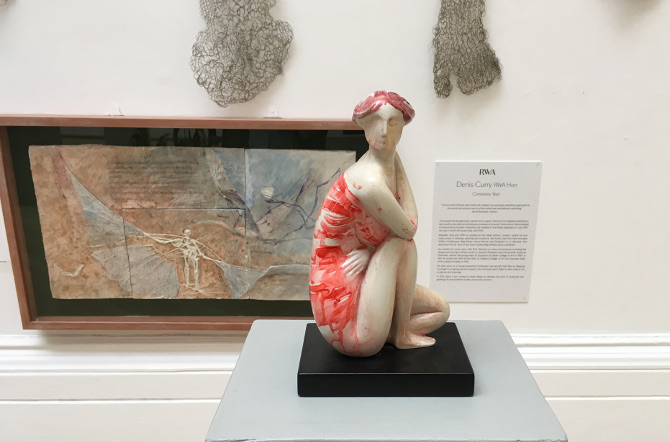 The galleries at the Royal West of England Academy (RWA) have a grandeur about them that rivals many of the world’s finest art museums. Their annual open exhibition opens up those spaces to any artist with vision and talent. I adore the democratic nature of this annual show, where anyone can submit their work for the possibility of seeing it selected to see it hang or stand among notable creations ranging from the famous, to the infamous.
The galleries at the Royal West of England Academy (RWA) have a grandeur about them that rivals many of the world’s finest art museums. Their annual open exhibition opens up those spaces to any artist with vision and talent. I adore the democratic nature of this annual show, where anyone can submit their work for the possibility of seeing it selected to see it hang or stand among notable creations ranging from the famous, to the infamous.